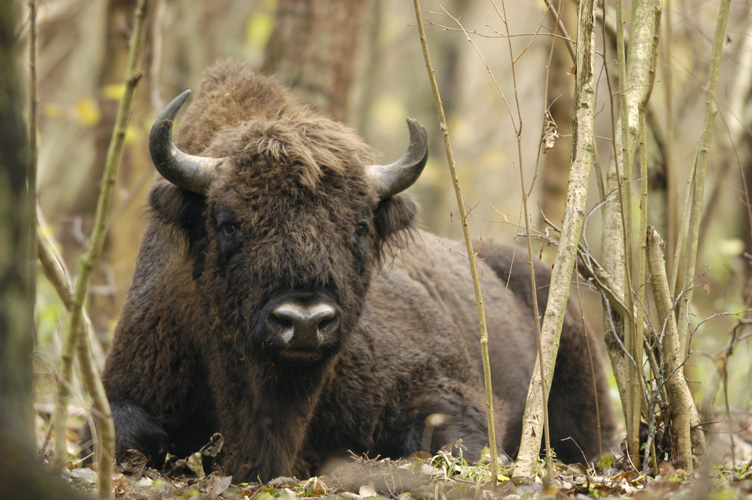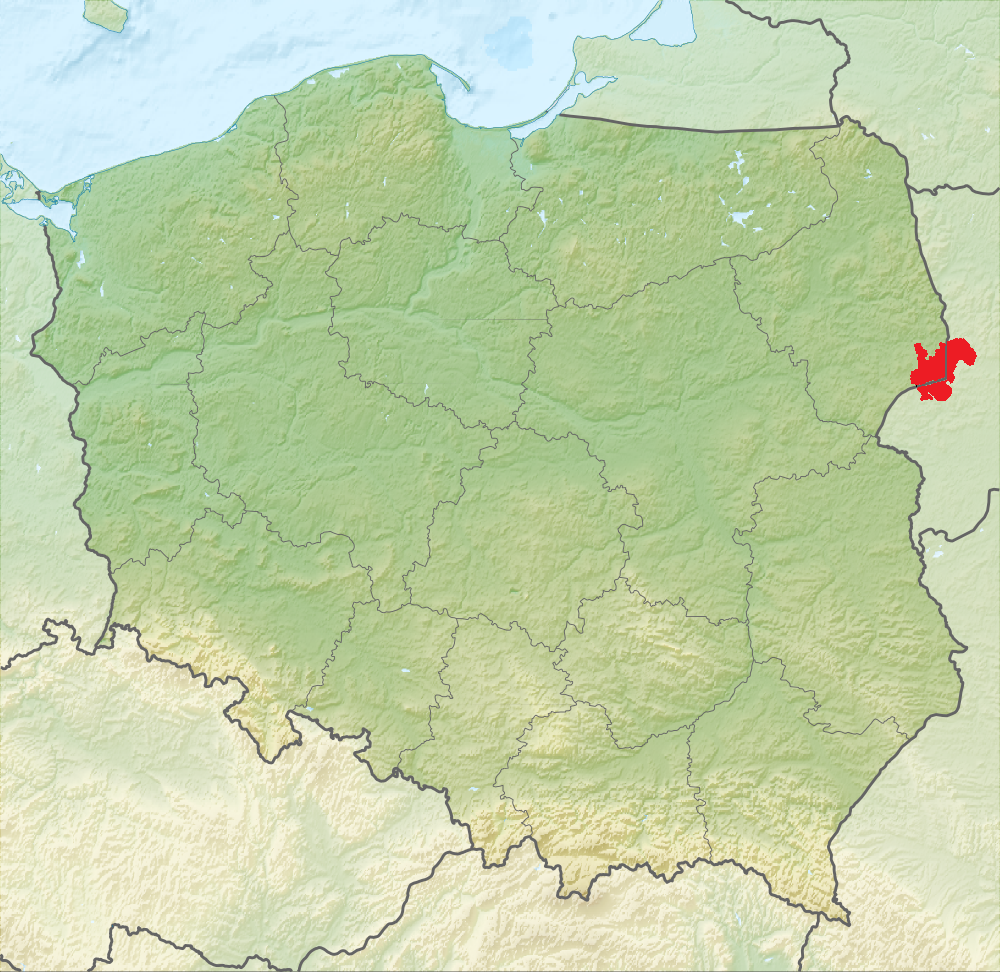|
Narew
The Narew (; be, Нараў, translit=Naraŭ; or ; Sudovian: ''Naura''; Old German: ''Nare''; uk, Нарва, translit=Narva) is a 499-kilometre (310 mi) river primarily in north-eastern Poland, which is also a tributary of the river Vistula. The Narew is one of Europe's few braided rivers, the term relating to the twisted channels resembling braided hair. Around 57 kilometres (35 mi) of the river flows through western Belarus. Etymology The name of the river is from a Proto-Indo-European root ''*nr'' primarily associated with ''water'' (compare Neretva, Neris, Ner and Nur) or from a Lithuanian language verb ''nerti'' associated primarily with ''diving'' and ''flood''. Name of the lower portion The portion of the river between the junctions with the Western Bug and the Vistula is also known as the Bugonarew, Narwio-Bug, Narwo-Bug, Bugo-Narew, Narwiobug or Narwobug. At the confluence near Zegrze the Bug is 1.6x longer, drains a 1.4x larger basin, and has a sligh ... [...More Info...] [...Related Items...] OR: [Wikipedia] [Google] [Baidu] |
Western Bug
uk, Західний Буг be, Захо́дні Буг , name_etymology = , image = Wyszkow_Bug.jpg , image_size = 250 , image_caption = Bug River in the vicinity of Wyszków, Poland , map = Vistula river map.png , map_size = 250px , map_caption = Bug River through Ukraine, Belarus and Poland , pushpin_map = , pushpin_map_size = 250px , pushpin_map_caption= , subdivision_type1 = Country , subdivision_name1 = Poland, Belarus, Ukraine , subdivision_type2 = , subdivision_name2 = , subdivision_type3 = VoivodeshipVoblastOblast , subdivision_name3 = Podlaskie, Mazovian, Lublin, Brest, Lviv , subdivision_type4 = , subdivision_name4 = , subdivision_type5 = , subdivision_name5 = , length = , width_min = , width_avg = , width_max = , depth_min = , depth_avg = , depth_max = , discharge1_locat ... [...More Info...] [...Related Items...] OR: [Wikipedia] [Google] [Baidu] |
Sudovian Language
Sudovian (also known as Yotvingian, or Jatvingian) was a Western Baltic language of Northeastern Europe. Sudovian was closely related to Old Prussian. It was formerly spoken southwest of the Nemunas river in what is now Lithuania, east of Galindia and in the north of Yotvingia, and by exiles in East Prussia. Name The language is referred to as Yotvingian, Jatvingian or Sudovian. Those names are derived from the southern- and northernmost tribes living in the area. When the Germans learnt the name "Sudovian" from the Prussians, they got to know the name of the northernmost tribe only, while Poles in the south met a tribe calling itself Yatvingian. Both Germans and Poles generalized the terms for all the Baltic inhabiants of the area. The territory they lived in is referred to as Sudovia underland Jotva ettwen Dainavia, or Pollexia. Classification Sudovian was an Indo-European language belonging to the Baltic branch. There are several proposals for the classification of th ... [...More Info...] [...Related Items...] OR: [Wikipedia] [Google] [Baidu] |
Vistula
The Vistula (; pl, Wisła, ) is the longest river in Poland and the ninth-longest river in Europe, at in length. The drainage basin, reaching into three other nations, covers , of which is in Poland. The Vistula rises at Barania Góra in the south of Poland, above sea level in the Silesian Beskids (western part of Carpathian Mountains), where it begins with the Little White Vistula (''Biała Wisełka'') and the Black Little Vistula (''Czarna Wisełka''). It flows through Poland's largest cities, including Kraków, Sandomierz, Warsaw, Płock, Włocławek, Toruń, Bydgoszcz, Świecie, Grudziądz, Tczew and Gdańsk. It empties into the Vistula Lagoon (''Zalew Wiślany'') or directly into the Gdańsk Bay of the Baltic Sea with a delta of six main branches ( Leniwka, Przekop, Śmiała Wisła, Martwa Wisła, Nogat and Szkarpawa). The river is often associated with Polish culture, history and national identity. It is the country's most important waterway and natu ... [...More Info...] [...Related Items...] OR: [Wikipedia] [Google] [Baidu] |
List Of Rivers Of Poland
Following is a list of rivers, which are at least partially, if not predominantly located within Poland.KSNG (2002–2014)List of Names of Flowing Waters (Wykaz nazw wód płynacych)(PDF file, direct download 1.47 MB), Komisja Standaryzacji Nazw Geograficznych poza Granicami Rzeczypospolitej Polskiej: Nazwy geograficzne. Pages: 1/348. , p. 85-86 Rivers by length ''For list of rivers in alphabetical order, please use table-sort buttons.'' |
Pułtusk
Pułtusk (pronounced ) is a town in northeast Poland, by the river Narew. Located north of Warsaw in the Masovian Voivodeship, it had a population of about 19,000 . Known for its historic architecture and Europe's longest paved marketplace ( in length), it is a popular weekend destination for the residents of Warsaw. Pułtusk is one of the oldest townships in Poland, having received city rights from Duke Siemowit I of Masovia in 1257. Throughout the 15th and 17th centuries, the settlement was a significant economic centre of Masovia. The favourable geographical placement of the town on the Narew, along which goods were transported to the port of Gdańsk on the Baltic Sea, contributed to the town's importance. Pułtusk was also the site of notable events, such as the Napoleon's 1806 battle, and the world's largest meteorite shower to date in 1868, among others. History Middle Ages The town has existed since at least the 10th century. In the Middle Ages, the Castle in Pu ... [...More Info...] [...Related Items...] OR: [Wikipedia] [Google] [Baidu] |
Zegrze Reservoir
The Zegrze Reservoir (or Zegrze Lake, in Polish officially ''Jezioro Zegrzyńskie'', unofficially ''Zalew Zegrzyński'') is a man-made reservoir in Poland, located just north of Warsaw, on the lower course of the Narew The Narew (; be, Нараў, translit=Naraŭ; or ; Sudovian: ''Naura''; Old German: ''Nare''; uk, Нарва, translit=Narva) is a 499-kilometre (310 mi) river primarily in north-eastern Poland, which is also a tributary of the river Vis ... river. It is formed by a dam constructed in 1963 with a hydroelectric complex producing 20 Megawatts of power. Its total area is about 33 km². The name originates from the nearby Zegrze village, featuring the historic Radziwiłł Palace (Pałac Zegrzyński) built in 1847 by the noble Krasiński family. See also * Zegrzynek, birthplace of Jerzy Szaniawski nearby References External links * *Targeo.pl (2016) Map with location and outline of the lake.*Zalew Zegrzyński (2010)- AKTUALNOŚCI.Internet A ... [...More Info...] [...Related Items...] OR: [Wikipedia] [Google] [Baidu] |
Strękowa Góra
Strękowa Góra is a village in the administrative district of Gmina Zawady, within Białystok County, Podlaskie Voivodeship, in north-eastern Poland. It lies approximately north-west of Zawady and west of the regional capital Białystok. The village has a population of 190. It lies on the Narew River The Narew (; be, Нараў, translit=Naraŭ; or ; Sudovian: ''Naura''; Old German: ''Nare''; uk, Нарва, translit=Narva) is a 499-kilometre (310 mi) river primarily in north-eastern Poland, which is also a tributary of the river Vis .... References Villages in Białystok County {{Białystok-geo-stub ... [...More Info...] [...Related Items...] OR: [Wikipedia] [Google] [Baidu] |
Podlaskie Voivodeship
Podlaskie Voivodeship or Podlasie Province ( pl, Województwo podlaskie, ) is a voivodeship (province) in northeastern Poland. The name of the province and its territory correspond to the historic region of Podlachia. The capital and largest city is Białystok. It borders on Masovian Voivodeship to the west, Warmian-Masurian Voivodeship to the northwest, Lublin Voivodeship to the south, the Belarusian oblasts of Grodno and Brest to the east, the Lithuanian Counties of Alytus and Marijampolė to the northeast, and the Kaliningrad Oblast of Russia to the north. The province was created on 1 January 1999, pursuant to the Polish local government reforms adopted in 1998, from the former Białystok and Łomża Voivodeships and the eastern half of the former Suwałki Voivodeship. Etymology The voivodeship takes its name from the historic region of Poland called ''Podlasie'', or in Latin known as Podlachia. There are two opinions regarding the origin of the region's name. P ... [...More Info...] [...Related Items...] OR: [Wikipedia] [Google] [Baidu] |
Neris
The river Neris () or Viliya ( be, Ві́лія, pl, Wilia ) rises in northern Belarus. It flows westward, passing through Vilnius (Lithuania's capital) and in the south-centre of that country it flows into the Nemunas (Neman), at Kaunas, as its main tributary. Its length is . For After Belarus the river runs through Lithuania. The Neris connects successive Lithuanian capitals – Kernavė and Vilnius. Along its banks are burial places of the pagan Lithuanians. At from Vilnius are the old burial mounds of Karmazinai, with many mythological stones and a sacred oak. Dual naming The reasons for the dual naming of the river as Neris by the Lithuanians and Viliya (formerly ''Velja'', meaning "big, great" in Slavic) by the Slavs are complex. Even in Vilnius, there are toponyms including both names, e. g. ''Neris'' remains in the riverside names of '' Paneriai'' and ''Paneriškės'' while ''Velja'' is a part of the name ''Valakampiai'', which means "an angle of Velj ... [...More Info...] [...Related Items...] OR: [Wikipedia] [Google] [Baidu] |
Białowieża Forest
Białowieża Forest; lt, Baltvyžių giria; pl, Puszcza Białowieska ; russian: Беловежская пуща, Belovezhskaya Pushcha is a forest on the border between Belarus and Poland. It is one of the last and largest remaining parts of the immense primeval forest that once stretched across the European Plain. The forest is home to 800 European bison, Europe's heaviest land animal. UNESCO's Man and the Biosphere Programme designated the Polish Biosphere Reserve ' in 1976 and the Belarusian Biosphere Reserve ' in 1993. In 2015, the Belarusian Biosphere Reserve occupied the area of , subdivided into transition, buffer and core zones. The forest has been designated a UNESCO World Heritage Site and an EU Natura 2000 Special Area of Conservation. The World Heritage Committee by its decision of June 2014 approved the extension of the UNESCO World Heritage site "Belovezhskaya Pushcha/Białowieża Forest, Belarus, Poland", which became "Białowieża Forest, Belarus, Pol ... [...More Info...] [...Related Items...] OR: [Wikipedia] [Google] [Baidu] |
Józef Cyrankiewicz
Józef Adam Zygmunt Cyrankiewicz (; 23 April 1911 – 20 January 1989) was a Polish Socialist (PPS) and after 1948 Communist politician. He served as premier of the Polish People's Republic between 1947 and 1952, and again for 16 years between 1954 and 1970. He also served as Chairman of the Polish Council of State from 1970 to 1972. Early life Cyrankiewicz was born in Tarnów in what was then the Austro-Hungarian Empire, to father Józef (1881-1939) and mother Regina ''née'' Szpak (1880-1966). His father was a local activist of the National Democracy as well as lieutenant in the Polish Armed Forces while his mother was an owner of several sawmills. Cyrankiewicz attended the Jagiellonian University. He became secretary of the Kraków branch of the Polish Socialist Party in 1935. World War II Active in the Union of Armed Struggle (Związek Walki Zbrojnej, later renamed to Armia Krajowa), the Polish resistance organisation, from the beginning of Poland's 1939 defeat at th ... [...More Info...] [...Related Items...] OR: [Wikipedia] [Google] [Baidu] |
Tributary
A tributary, or affluent, is a stream or river that flows into a larger stream or main stem (or parent) river or a lake. A tributary does not flow directly into a sea or ocean. Tributaries and the main stem river drain the surrounding drainage basin of its surface water and groundwater, leading the water out into an ocean. The Irtysh is a chief tributary of the Ob river and is also the longest tributary river in the world with a length of . The Madeira River is the largest tributary river by volume in the world with an average discharge of . A confluence, where two or more bodies of water meet, usually refers to the joining of tributaries. The opposite to a tributary is a distributary, a river or stream that branches off from and flows away from the main stream. PhysicalGeography.net, Michael Pidwirny ... [...More Info...] [...Related Items...] OR: [Wikipedia] [Google] [Baidu] |




